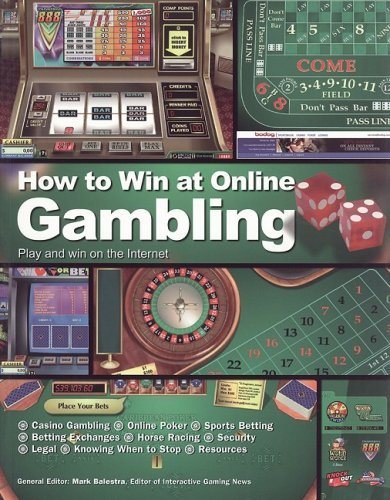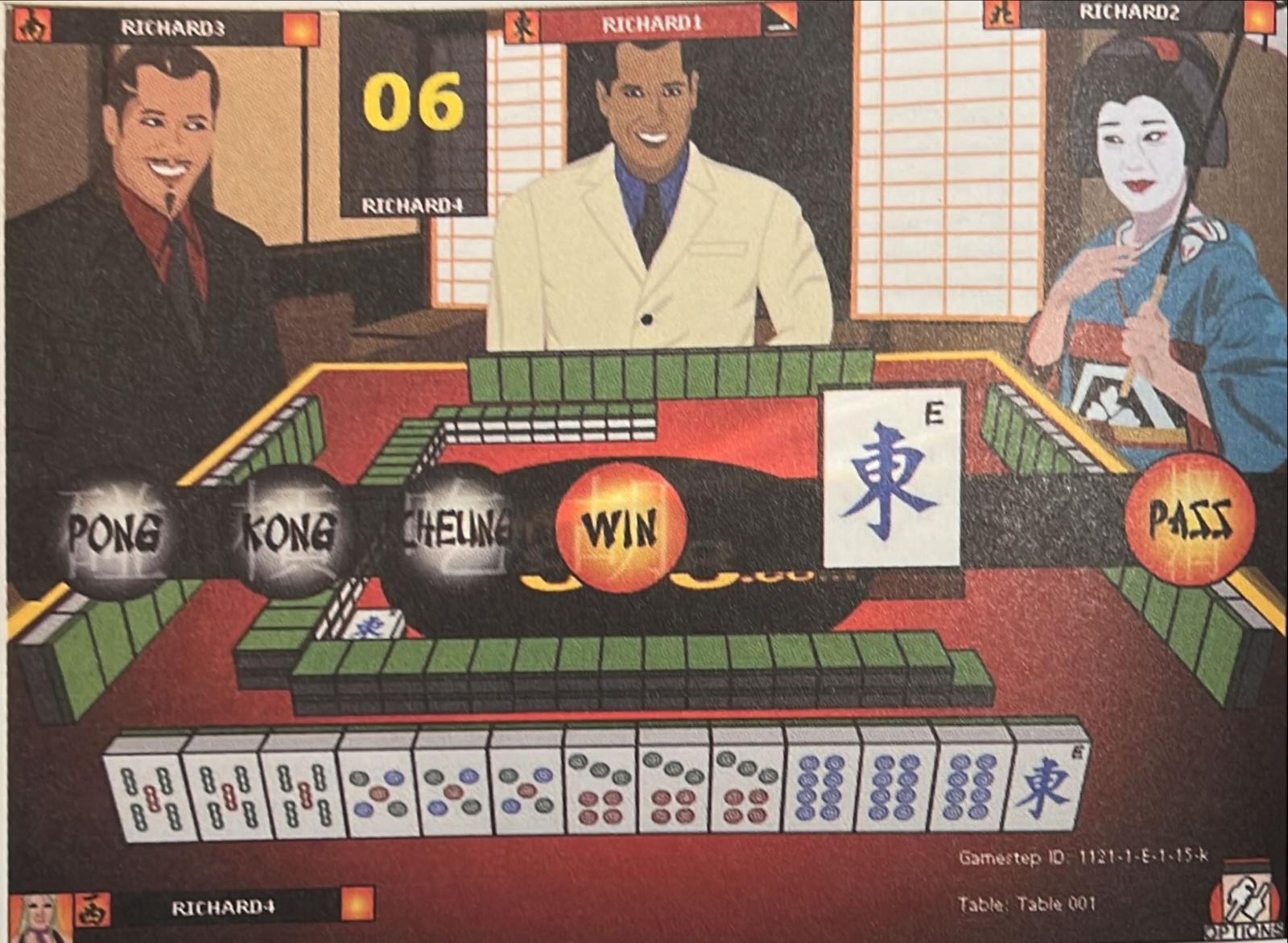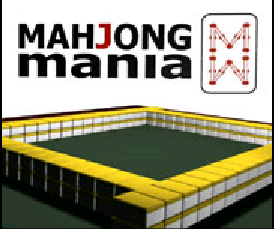Physical Address
304 North Cardinal St.
Dorchester Center, MA 02124
Physical Address
304 North Cardinal St.
Dorchester Center, MA 02124

From the book How to Win at Online Gambling. Edited by Mark Balestra
By Ian Sherrington
The fascinating game of Mahjong has roots in Asia and has become one of the most widely played games throughout the world. Played by beginners and masters alike, it is based on an easily understood proposition (similar to Rummy), but intriguingly, the game can take years to master. With its exciting combination of skill, luck and karma, the game of Mahjong always means something deeply personal to many players.

The origins of the game are shrouded in mystery. According to one theory, the game was played during the 40 days and nights on Noah’s Ark, that would suggest the game dates back to 235 BC. Another supposes that the game was invented by the great philosopher Confucius around 500 BC. A more likely theory is that the game developed from earlier Chinese games such as Ya Pei and Ma Tiae and that around 1850 AD the game of Mahjong was formalized as we know it today.
During the 192()s the game was introduced into the United States and became mainstream and very popular. Indeed, such was the demand for Mahjong sets, they became the 6th most valuable export commodity from Shanghai. Amongst others, Parker Brothers and Milton Bradley also began production of Mahjong sets and it is said that the demand for the production actually saved Milton Bradley from bankruptcy.
During the 192()s the game was introduced into the United States and became mainstream and very popular. Indeed, such was the demand for Mahjong sets, they became the 6th most valuable export commodity from Shanghai. Amongst others, Parker Brothers and Milton Bradley also began production of Mahjong sets and it is said that the demand for the production actually saved Milton Bradley from bankruptcy.
It seemed that most American establishments where the game was played decided to adopt their own set of rules. That was until 1924 when the official American rule book was published in an attempt to standardize the way the game is played. There are however many rule sets in common use today; these include the most popular Hong Kong Cantonese game as well as the Shanghai, Japanese, and Taiwanese versions (to name a few).
The game is played with a set of Mahjong tiles which were originally made of bone, ivory or bamboo and more recently from high quality plastics. The sound of the tiles when shuffled together resembles that of birds chirruping and chattering and hence the name Mahjong which in English literally means “Hemp Bird” or more commonly the Sparrow.
Examination of a standard Mahjong set will show. 144 tiles in total, and these are divided up into “common tiles” of three suites and “honor tiles” of Dragons and Winds. Additionally there are “seasons” and “flowers.”
Examination of a standard Mahjong set will show. 144 tiles in total, and these are divided up into “common tiles” of three suites and “honor tiles” of Dragons and Winds. Additionally there are “seasons” and “flowers.”
The three suites are “Characters,” “Circles,” and “Bamboos,” and each consists of numbered tiles from 1 to 9. (There are four of them each.) Then there are three types of Dragon: Red, White and Green. There are four types of Wind: East, West, North and South. Optionally, there is one of each season tile—Spring, Summer,Autumn, and Winter—as well as four flower tiles: Plum, Orchid, Chrysanthemum, and Bamboo. A typical Mahjong set contains 144 tiles.
The optional flowers and season tiles are Spring, Summer, Autumn, Winter, Plum, Orchid, Chrysanthemum and Bamboo. There is one tile of each, and not four as in the other tiles. These tiles can be incorporated in a game if the players agree. They act as a kind of bonus tile; they are not incorporated in the player’s Mahjong hand but placed face up in front of the player and another tile is drawn from the tail of the wall.
The traditional Hong Kong Cantonese Mahjong game requires that four players sit at a square table; their seating positions are known as the winds: East, South, West and North.
At the beginning of a game, each player is randomly seated and the player that has been allocated the East seat is the dealer. A Mahjong game usually consists of at least four “rounds,” in which each player is East Wind at least once. If the East Wind player wins, he can retain East Wind for another round, so a game can consist of more than four rounds of Mahjong. Hereafter, a round is referred to as a game.
Tradition dictates that the tiles are shuffled face down and that each of the four players create a wall of tiles— two high and 18 long (17 if the optional Flowers and Seasons are not included). The four walls are then placed together to create a square wall.
Thirteen tiles are then dealt to each player, with one extra for the dealer, but first the ritual of “breaking the wall” is carried out to decide where the dealing should begin. The position of the break is decided by the roll of two dice.
The general idea of the game is to assemble a winning Mahjong hand before the other players. This is done by picking up and discarding tiles according to the player’s strategy and it is this decision-making process of which tiles to keep and which to discard that is the essence of the game. Once the tiles are dealt, the player decides on his or her strategy.
Although there are a few exceptions, most winning Mahjong hands consist of 3s of a kind (called a “Pong”), straights (called a “Chow”), and/or 4’s of a kind (called a “Kong”). A Kong is actually counted as three tiles, and should a player achieve a “Kong,” he is dealt another tile. A winning hand consists of any combination of four Pongs, Chows or Kongs and a pair of tiles called the “Eyes.” That’s 14 tiles (always counting a Kong as 3 tiles). A CHICKEN HAND is an unremarkable mixture of Pongs and Chows.
Scoring is reasonably straightforward. A winning Mahjong hand and the circumstances that lead up to its achievement dictate the number of Fans the hand is worth. The lowest Fan score is 0 for what’s called a “Chicken Hand,” and the highest is 15. Fans are translated into points, which go up more or less exponentially for each extra Fan that is achieved. So for one Fan, you would receive 4 points and for six Fans 65 points, right up to 15 Fans for 1,536 points.
The idea behind all of this is to encourage the players to achieve the highest number of Fans by going for the most difficult of hands and to maintain a discipline in doing so.
Optional variations to the scoring can be such that players have “accounts” and pay the points from their accounts to the winner. In this case, the discarder of a tile that is used by the winning player to complete his hand (known as “Winning by Discard”) can be punished by being made to pay all of the points to the winner. More commonly, he may pay the larger part of the winning points with the other losers paying the smaller part. Should the winner win by picking a tile from the wall (known as winning by “Self Pick”), the three losing players pay equally.
Once dealt a Mahjong hand, a player works out a strategy to return the maximum value in the fastest time for that combination of tiles. The easiest hands are usually obtained faster but these tend to score low— the lowest scoring hand being a Chicken Hand, which gives 0 Fans or 2 points. The more difficult high scoring hands take longer to achieve but can be well worth the risk. A Chicken Hand player needs to win many more times than the player who occasionally obtains a high scoring hand.
Avoid collecting suits that other players are collecting by taking note of their discards. Another clue to a
player’s intentions is when a player lays down two or more triplets of one suit. Avoid collecting that suit, but be careful with your discards.
The fourteenth tile completes a Mahjong hand, which is generally four triplets and a pair. Maximizing the ways to complete the hand means maximizing the different tiles that would qualify the hand as a winner.
If only one tile qualifies the hand, such as waiting for the other half of the pair, then care must be taken to ensure that some tiles are still left in the wall. Remember the remainder could be in the other players’ hands, and the tile may never come free. This could mean that the hand can never win.
A better way is to end up waiting for a Chow, such as a 4 and 5. Then the hand needs a 3 or a 6 to win, and this can be picked up from any player’s discard, as the tile will qualify a hand for Mahjong. The same goes for waiting for a tile to complete one of two Pongs; either of two tiles could win the game.
Let’s say a hand has three completed triplets and a I x 5 and a triplet of 6s. The hand is waiting on a 5 to make the pair, but also on a 7 as this would make 5,6,7 and a pair of 6s. Plus, a 4 would be excellent as well, as this would make 4,5,6 and a pair of 6s. In this case, there are three different tiles to go Mahjong, which is much better than just waiting for a pair!

The popularity of the Internet enables people from all over the world to play against one another from the comfort of their own futons. Mahjong works well on the Internet. All the hard work of shuffling and dealing of tiles is done for the player, and all the fun of the game is still there. Also, the scores for each winning hand are handled automatically and correctly. All that’s left for the player to do is to concentrate on playing a skillful game.
There are a number of great Web sites where many players come to pit their skills against one another. Most of them require players to register their names and addresses, and in return they receive usernames and passwords to access the site. A download of the Web site’s gaming software is usually required, and once the software is installed, the player can play online against other Internet Mahjong players.
The Internet Mahjong player can choose from three main types of sites:
@ FREE SITES — Play whenever you want for free (usually against a computer).
@ SUBSCRIPTION SITES — Mainly consisting of real multiplayer tournaments
@ MAHJONG CLUB SITES — Straight game betting propositions and tournaments.
All three types are popular, with some sites showing over 30,000 players online at any given moment.
Fundamentally, two forms of Mahjong are available online for money or prizes: the single Mahjong game and the Mahjong tournament. With a straight game of Mahjong, each player risks a fixed stake on the outcome of a game, and the winner receives payment from the others. The player is not rewarded for the elegance of his Mahjong hand, only for the fact that he has a Mahjong hand at all. The skill in is to think fast and play fast.
In a tournament, the game is played using traditional scoring and is played over the traditional minimum four rounds of Mahjong. At the end of the tournament, points are added up and the top players are rewarded with cash and/or other prizes.
The Internet presents some problems, mainly related to security, trust and collusion. On the whole, the Internet Mahjong player should only play on sites that have a recognized name and a reputable history. You can be sure that their software will not compromise your computer and that all communications with the central server are encrypted, thus denying any hacker the ability to trace your network traffic.
While these rules are general for all Internet activity, Mahjong has specific risks associated with collusion among players (when two or more secretly try and help each other to win). The rules forbid this of course, but it is difficult to detect. Some Mahjong Web sites employ game rules that make the discarder of the winning tile pay the full penalty to the winner, thereby removing their advantage. Other techniques involve artificial intelligence systems to detect collusion. Details of these are understandably sketchy. Any player caught colluding is disqualified from the tournament and typical banned from the Web site.